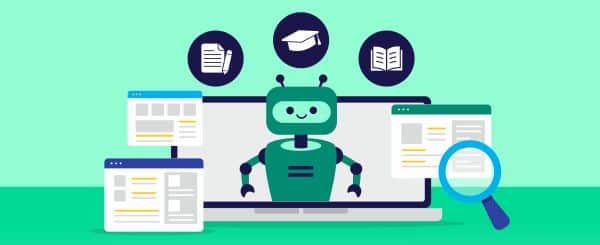Why Email Marketing Strategies Still Work
Social media tends to remain the focus when it comes to emerging marketing trends. Scroll through LinkedIn, and you’re guaranteed to see a post from a marketing expert urging you to recognize the opportunities social media platforms provide for your brand. Social does play a huge role, especially when fostering community, but that doesn’t mean you should leave other strategies behind.
Enter your old friend, email. You should never look at email as a singular channel to rely on, but rather a part of a more comprehensive, multichannel strategy. Marketing teams tend to overlook and underappreciate email strategies; however, they can be a low-cost, highly effective part of your enrollment marketing mix.
Listen to the Facts
You should continue to use email marketing for a number of reasons. McKinsey & Company recently reported that email is 40 times more effective in acquiring new customers than Facebook and Twitter combined. And according to HubSpot, 78% of marketing professionals have seen an increase in email engagement over the past year. Speaking specifically to higher ed, RNL’s 2021 E-Expectations Trend Report says 51% of students listed email as their No. 1 choice for follow-up communications. The numbers don’t lie.
More importantly, email marketing is a lot lighter on your budget than most pay-per-click campaigns. “For every $1 marketers spend on email marketing, they receive $36 in return,” according to Litmus. You rarely see those kinds of numbers with social campaigns.
In an age of shifting algorithms and privacy changes, email marketing is still relevant. It’s tried and true, and it’s not going anywhere.
Modernize Your Email Marketing Content Strategy
Email may seem less useful in modern campaigns because many marketers have been using it the same way for the past decade. A whole lot has changed in the last 10 years, however. You now have a number of ways to modernize your students’ email experience and, in turn, their student experience.
For starters, 85% of adults in the U.S. now own a smartphone. With that, it’s no surprise that over 70% of people would rather read their emails via their mobile apps than on a desktop. Marketers who work on their laptops all day can forget where most emails are read. But teams must remember to review emails in both desktop and mobile mode. Don’t lose a prospective student because your clunky design didn’t translate well on their phone.
Lean Into Personalization
Speaking of tailoring content to your current audience, universities can do more with personalization.
Start with testing your subject line. Believe it or not, tailoring just a few words can make all the difference: Recipients are 26% more likely to open emails with personalized subject lines, according to Experian data reported by Campaign Monitor. For example, say you’re running three different ads that invite users to request more information — one for potential grad school students, one for undergrad candidates, and one for bootcamp candidates. If you know where your inquiries are coming from, you can segment your audience into those three categories and then personalize messages to prospective students in each segment based on the programs they’re interested in. Most email platforms support this type of audience segmentation and personalization today.
Don’t have the right data to help with this? Include a question in your email sign-up form asking about their program interests. Give them a reason to engage with your email marketing.
While the subject line is a great place to start, you can tailor many aspects of an email. Research suggests you can improve your click-through rate by 14% and conversions by 10% through personalization.
By providing students with clear, valuable, and personalized information, you’ll help them feel less like they’re just another contact on your email list. They’ll gain real value from your communications, and you’ll see positive enrollment results. It’s a win-win.
Tap Into AI for Automated Personalization
Before you panic about robots taking over your marketing duties, we’d argue that, in this case, artificial intelligence (AI) only helps you be better at your job. Data is king and should drive every aspect of your marketing strategy. AI is designed to make decisions based on data, creating a world of new possibilities for email marketers.
By analyzing a consumer’s demographic information and previous interactions, along with current data trends, AI can use machine learning and predictive analytics to anticipate a student’s next steps. It’s a technological breakthrough that’s bringing email marketing strategies into the modern era.
Stay Diligent With Your Reporting
Reporting is an essential step in content marketing. Through disciplined reporting and analysis, your emails will constantly improve. It’s like starting a new diet: You wouldn’t want to blindly continue to cut out sugar if you weren’t seeing results. Something has to motivate you to keep going.
In email marketing, you sacrifice time and energy to report and analyze, and in this case, the data is entirely quantitative. The more you focus on data-driven insights, the better you can serve prospective students. They’ve requested information for a reason, and it’s your job to figure out which communication channels they prefer and what information they need to take the next step. Testing different subject lines, headline sizes, media attachments, and beyond can help you gauge what is resonating with your audience, giving you a better sense of how to market to college students. Measuring content performance helps you understand your prospective students’ preferences so you can speak to them directly.
Don’t Give Up On Email Marketing
Email isn’t dead. It’s alive and well, and you can tailor and personalize it through data and automation. Email may not be a silver bullet — nothing in marketing is — but it’s an incredibly effective tool that every university’s lead nurturing strategy should utilize.
To keep your email marketing strategy relevant, make sure to take a few steps to catch up with the expectations of today’s students:
- Modernize your strategy and keep the mobile experience top of mind.
- Give your audience content that’s relevant to them in the mode they want to receive it.
- View personalization as an essential element that’s achievable at the highest level through AI but also on a basic level by asking questions.
- Remember the importance of creating reports, analyzing them, and executing more tests along the way so you’re always optimizing.
Modern email marketing is statistically proven to work. It’s powerful, low risk, and easily optimized. If you’re not seeing the results you want, you probably just need a strategy refresh.
_________________________
Archer Education partners with dozens of institutions to help them overcome enrollment challenges using tech-enabled, personalized enrollment marketing and management solutions. Click here to request more information about Archer’s full-funnel engagement strategies and digital student experience technology.



